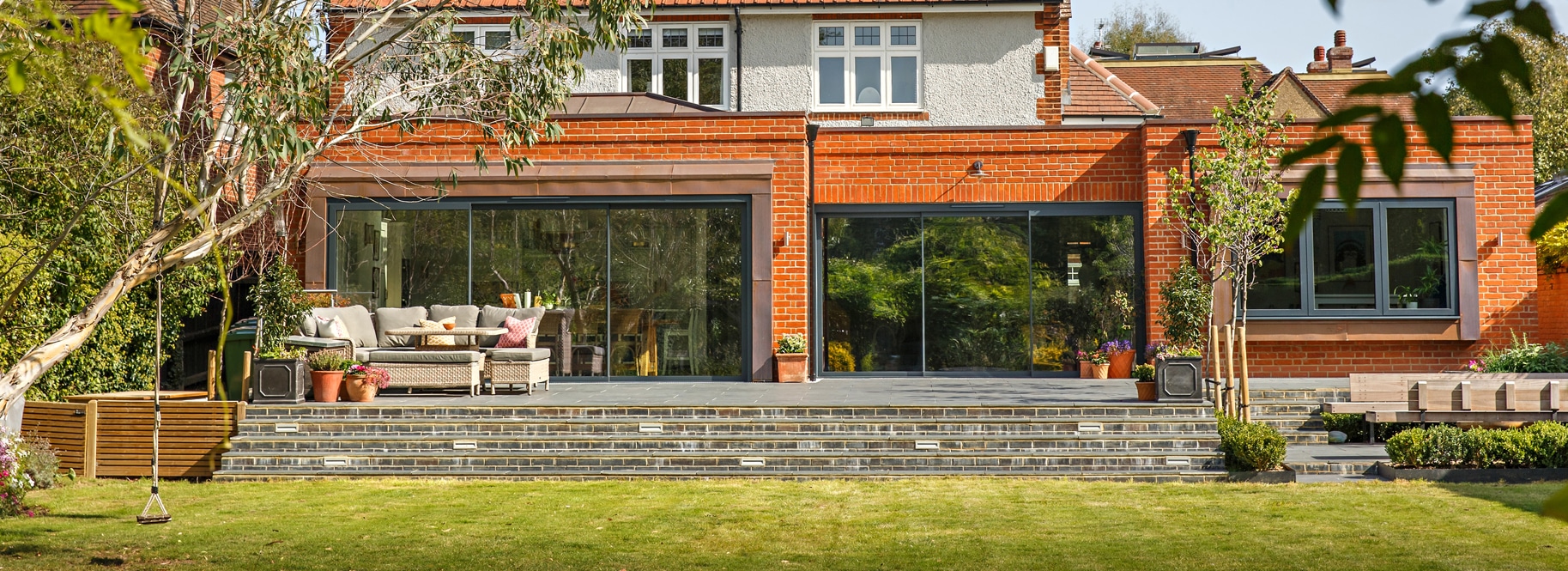The most recent updates to Building Regulations in England & Wales were announced in December 2021. Those updates came into force in June 2022, although the 12 month leeway for projects already underway means that they are only now starting to impact new projects.
Approved Document F – Ventilation
Approved Document L – Conservation of Fuel and Power
Approved Document O – Mitigating Overheating
To cover the changes and what it means for architects, builders and homeowners selecting glazed doors for their projects we have written three blogs, each covering the relevant Approved Document in detail.
Approved Document O – Mitigating Overheating
>> Download Building Regulations – Approved Document O
A brand new addition to Building Regulations, Part O covers steps required to mitigate overheating in residential homes.
The new requirements have the potential to have a far greater impact on overall building design that even the enhanced standards required under Part L, because the effect of the Approved Document is to place greater emphasis on the amount of glazing in a home, particularly on south facing elevations and particularly in ‘higher risk’ areas including significant parts of London and small areas of Manchester.
The reason for Approved Document O
The Approved Document has been included as part of Building Regulations in recognition that overall temperatures in the UK are likely to continue to rise in years to come. If this is the case having reduced energy usage by introducing the tougher standards required by Part L, seeing everyone go out and buy power-hungry air conditioning units because their home are now overheating rather negates the point.
When it comes to glazing design, the most obvious and immediate changes will likely be a reduction on the amount of glass that can be included on predominantly south-facing elevations for projects in London. Without additional mitigation methods in place it seems like the days of fully-glazed backs of houses with large windows and doors overlooking south-facing gardens may well be a thing of the past, however this is where clever bits of building design can assist.
Glass specification to comply with Approved Document O
The first, and most obvious, bit that we can do is to reduce solar gain through the glass by increasing the solar control properties of the glass within the specification of aluminium sliding doors, bifold doors or slide & turn doors. Coatings on the surface of solar control glass reflects and absorbs heat, reducing the temperature of the rooms.
In terms of overall building design we expect to see more projects with overhangs, where the first floor of a property extends beyond the ground floor so that the doors and windows on the ground floor are shaded from the sun when it is at its highest (and hottest) in summer. We also expect to see brise-soleil being included on domestic projects more frequently to achieve the same effect.
Potential alternatives to sliding doors
Sliding doors have proven incredibly popular because their large panes of glass and minimal frames maximise the amount of glass in an opening, but going forwards it may mean that the trend towards sliding doors slows slightly as homeowners review the choice of systems.
If the amount of glass (and therefore the size of glazed doors) does need to be reduced then we expect to see a surge in interest in products such as our vistaline slide & turn doors, which feature narrow 45mm sightlines but can be completely opened up just like bifold doors – making them the perfect solution for smaller apertures.


